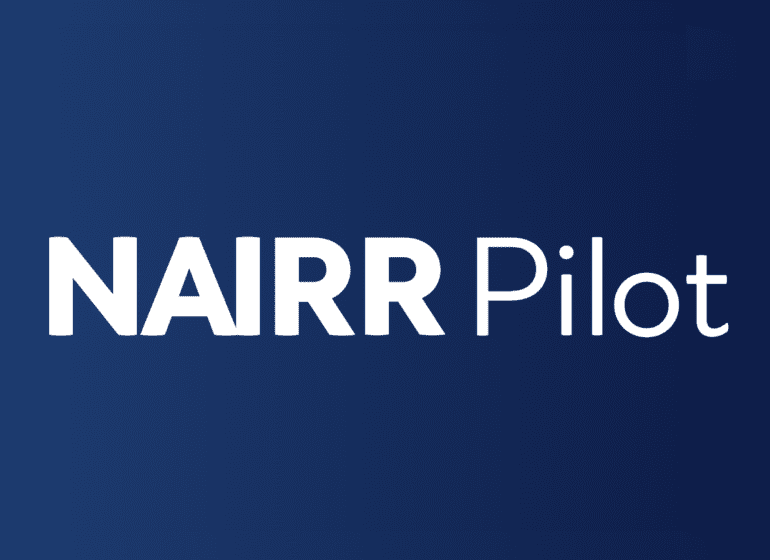TL;DR:
- The National Artificial Intelligence Research Resource (NAIRR) Pilot has been launched by the NSF and DOE, providing advanced computing resources for AI research projects.
- The initial call for research proposals is open until March 1, 2024, with plans for a broader call in spring 2024.
- Research goals include testing and validating AI systems, improving model accuracy and interpretability, and addressing vulnerabilities to adversarial attacks.
- Projects in healthcare, sustainability, AI education, and other AI domains aligning with these themes may also be considered.
- The San Diego Supercomputer Center (SDSC) is actively involved in the NAIRR Pilot, with a focus on enhancing AI resource access.
- The pilot marks the beginning of a multi-year program, introducing various services such as data sources, cloud credits, and experimental AI architectures.
- NAIRR has the potential to democratize AI resources, ensuring equitable access for researchers and educators.
- Collaboration between federal agencies, academia, and the private sector aims to pave the way for full-scale NAIRR implementation.
- Proposals for the initial call will be reviewed biweekly until resources are exhausted.
Main AI News:
In a groundbreaking move, the National Science Foundation (NSF) and the U.S. Department of Energy (DOE) have unveiled the National Artificial Intelligence Research Resource (NAIRR) Pilot, ushering in an era of opportunity for the U.S. research community. This pioneering initiative invites researchers to seek access to cutting-edge computing resources, specifically dedicated to advancing the realms of secure, trustworthy, and safe AI.
The launch of the NAIRR Pilot marks a significant milestone, accompanied by the inaugural call for research proposals, which remains open until March 1, 2024. A subsequent open call for allocations is anticipated to follow in the spring of the same year.
The NSF and DOE have outlined a set of criteria to guide prospective projects, emphasizing the following research objectives:
- Testing, evaluating, verifying, and validating AI systems.
- Enhancing the accuracy, validity, and reliability of model performance while rigorously managing bias.
- Augmenting the interpretability and privacy of machine-learned models.
- Mitigating the vulnerability of models to various adversarial attacks.
- Pioneering capabilities that ensure model functionality aligns with societal values and adheres to safety guarantees.
Additionally, projects aligned with these overarching research themes, spanning areas such as healthcare, environmental sustainability, infrastructure, AI education, and various domains of AI research, will also be considered for allocation.
San Diego Supercomputer Center (SDSC) and its Role in the NAIRR
The San Diego Supercomputer Center at the University of California San Diego has long awaited the launch of the NAIRR Pilot. Michael Norman, former SDSC Director and UC San Diego Distinguished Professor of Physics, was among the 12 members of the NAIRR Task Force. This task force, initiated at the request of the Biden Administration in 2021, diligently crafted a blueprint for a national AI approach. In January 2023, the NAIRR Task Force presented its final report, setting the stage for the pilot’s unveiling.
For the inauguration of the NAIRR Pilot’s initial call for proposals, the SGX3 Center of Excellence for Science Gateways, under the leadership of Michael Zentner, Director of SDSC’s Sustainable Scientific Software Division (S3D), ingeniously developed the NAIRR Pilot portal using the Hubzero framework.
Zentner expressed enthusiasm, stating, “This is the first step towards the nation’s comprehensive NAIRR implementation. Portals that facilitate AI resource access will empower a diverse range of researchers to make a meaningful impact. The SGX3 and SDSC teams are thrilled to be part of this inaugural phase and eagerly anticipate contributing to this visionary future.”
In the long term, SDSC envisions a multi-year program rollout, introducing progressively more advanced services encompassing data services, science gateways, cloud credits, and experimental AI architectures, all areas where SDSC has demonstrated leadership.
Frank Würthwein, SDSC Director, shared his excitement, stating, “We are highly optimistic about the potential of this pilot program, particularly with its inclusion of curated AI-ready data sources and cloud credits as part of the allocation mechanism. This encompasses allocations on experimental systems like Voyager and the National Research Platform, alongside AI resources for educational initiatives.”
Ilkay Altintas, SDSC’s Chief Data Science Officer, who leads the center’s Cyberinfrastructure and Convergence Research and Education (CICORE) Division, expressed the transformative potential of NAIRR. “NAIRR has the potential to be a game-changer for anyone engaged in AI work, ensuring equitable access to data and resources. We eagerly anticipate the opportunities and impact this resource will bring, enriching our efforts at SDSC for AI collaborations and driving discoveries for science and society.”
Collaboration and Preparation for the Full NAIRR Implementation
In a pivotal gathering in early November 2023 at the NSF, representatives from federal agencies, academia, and the private sector initiated a collaborative process to design a pilot program for NAIRR. This program aims to connect U.S. researchers and educators with essential computational, data, and training resources to propel AI research and AI-driven research to new heights. Federal agencies are working in tandem with government-supported and non-governmental partners to implement this pilot as a preparatory step toward the eventual full-scale NAIRR implementation.
In the interim, proposals submitted during the inaugural call of the NAIRR Pilot will undergo biweekly review, with responses provided on the same timeline. The allocation of resources for this initial call will continue until exhaustion. The NAIRR Pilot promises to be a trailblazing initiative, poised to reshape the landscape of AI research and innovation in the United States.
Conclusion:
The launch of the NAIRR Pilot signifies a significant step forward in the field of AI research. With a strong focus on security, trustworthiness, and safety, this initiative is set to drive innovation and collaboration among researchers. The involvement of institutions like the San Diego Supercomputer Center promises advanced AI services, creating new opportunities for the market and fostering AI advancements across various domains.

